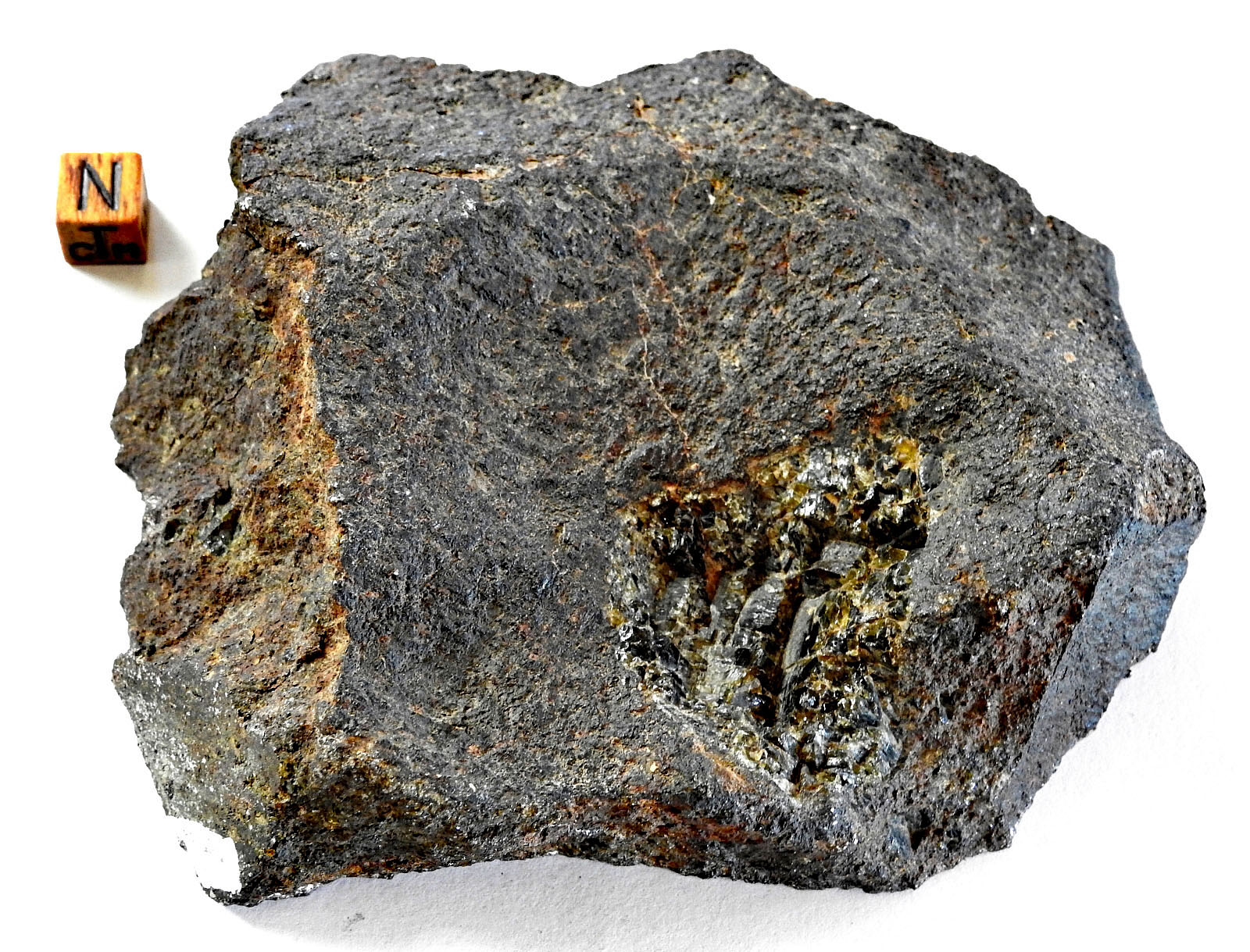|
Roll Overs:
#1
#2
#3
#4
#5
#6
#7
#8
#9
#10
|

|
|
Copyright (c) Steve Brittenham.
|
772 grams. Mesosiderite-C
TKW 877 grams, according to the MetBul, but that can't be right. Fall not observed. Purchased June 2003, Rissani, Morocco.
  
Steve writes:
This end cut from an unclassified stony-iron meteorite weighs approximately 772 grams and was found in Northern Africa more than two decades ago. It was purported to have been brought to Tucson as a sample of a much larger piece, and when no one would offer the asking price, the frustrated seller out of spite buried the main mass at an undisclosed location in the African desert so nobody else would ever find it.
There is likely no way to verify the story, nor if true, know if the original owner went back and recovered the remainder of the meteorite to peddle at a later time. But he did sell the original end cut to a meteorite dealer, who in turn told me of its history when I purchased it back in 2008.
Photos 1 and 2 show the mostly fusion-crusted end of the meteorite. Photo 3 was taken from the side to better show its broken edge (lower right); in that picture, one can also see the small window that was originally made to help identify what type of meteorite it was. As purchased, the cut surface was pretty rough, with considerable saw marks; Photo 4 shows that surface after subsequent sanding.
Mesosiderites are among the strangest and rarest types of meteorites (only about 2% are stony-irons, which also include pallasites). As breccias with approximately equal mixes of silicates and metal, mesosiderites are believed to be a surface regolith that was mixed and fused by repeated impacts some 4.5 billion years ago, resulting in the smaller asteroids’ metal mixing with olivine-rich material from the mantle of a larger asteroid. Recrystallization in some mesosiderites suggests they may have been deeply buried and somehow reheated at one point in their history.
One of the more interesting features of this particular piece is an approximately 30x40 mm olivine crystal cluster exposed on its fusion-crusted side (Photo 5). This cluster seems to be traceable all the way through to the cut portion of the stone, where it presents as an 8 mm circular inclusion in the otherwise mottled metal and silicate lithology surrounding it (closeup in Photo 6).
Photos 7 and 8 are, respectively, crossed-eyes and red-cyan anaglyph 3D images of the olivine crystals in the fusion crust. Recently, it was requested that I include parallel-eye images for those that struggle with crossed-eyes ones, but everything I’ve read suggests they need to be quite small to work (and, unfortunately, I can’t personally do them myself to check). Alternately, Photo 9 offers an animated gif “wiggler” as a substitute to try to give some idea of its shape (let me know if this is useful, and if so, I’ll work on versions for future posts that more smoothly morph between the two stereo views, as shown in Photo 10’s low resolution test example).
Click to view larger photos #1 #2 #3 #4 #5 #6 #7 #8 #9 #10
|
| |
Kally Wombacher
11/30/2020 6:42:21 AM |
The Olivin cluster is jaw dropping |
Sang-Hyeok, Lee
11/29/2020 8:07:10 PM |
What a beautiful meteorite!! |
John Divelbiss
11/29/2020 5:40:11 PM |
I have samples of both NWA 1827 and NWA 1882. Nicest looking MESO that I have !! |
Steve Brittenham
11/29/2020 11:47:08 AM |
Thanks Michael (and the anonymous poster) for the pairing info. It's always great to learn more about my pieces -- especially those I have no background on (getting this kind of feedback is one of the great things about MPOD!). I'll have to go read up more on this meteorite now that you guys have helped me figure out what it is. Thanks again! |
Jim Brady
11/29/2020 11:05:43 AM |
cool piece--awesome crystals |
Michael farmer
11/29/2020 9:05:30 AM |
This is 100% a piece of NWA 1827
I got 50 kilos of it. That*s a piece. |
anonymous
11/29/2020 3:25:08 AM |
NWA 1827 / 1882 pairing, mostly distributed by the Hmanis. |
| |
|